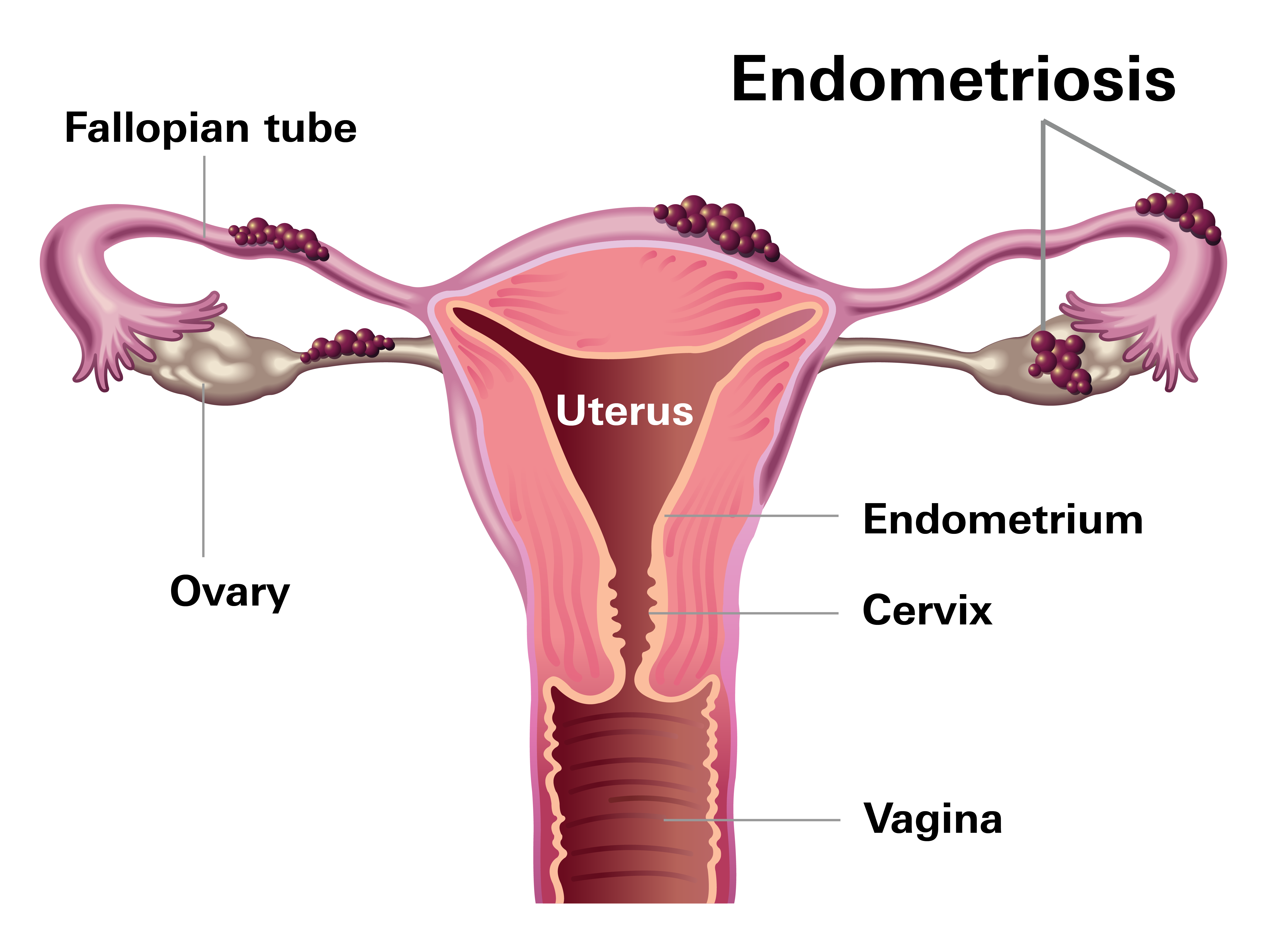What You Need to Know About Endometriosis?
Endometriosis: What is it?
Endometriosis is a painful, chronic condition defined by the presence of tissue similar to the uterine lining (endometrium) growing outside the uterus. This lining normally builds up inside the uterus each menstrual cycle to support a potential pregnancy. If pregnancy does not occur, this lining is shed during the menstrual period.
In cases of endometriosis, similar tissue proliferates outside the uterus, often on the ovaries, fallopian tubes, the outer surface of the uterus, and surrounding ligaments. It can also extend to other areas such as the bladder and intestines, and in rare instances, to distant organs like the lungs or stomach. The growth of this tissue outside the uterus leads to inflammation and the formation of scar tissue, which can cause organ damage and severe pain.

What Causes Endometriosis?
The exact cause of endometriosis remains unclear, and there is no singularly accepted explanation. However, a prevalent hypothesis is that menstrual blood and endometrial cells may flow backward through the fallopian tubes into the pelvic cavity during menstruation. This backflow could deposit endometrial cells in locations where they implant and grow, resulting in the symptoms associated with endometriosis.
Symptoms of Endometriosis
Pelvic pain is the main symptom of endometriosis and is often described as dysmenorrhea, which refers to severe menstrual pain. Unlike common menstrual cramps, the pain caused by endometriosis may begin before and extend after the menstrual period. Additional symptoms may include:
- Persistent pain in the pelvic region not limited to menstrual periods
- Discomfort or pain during sexual intercourse
- Pain during urination
- Painful bowel movements
- Lower back pain
- Heavy periods
The intensity of pain and symptoms can vary significantly among individuals. Some may experience mild symptoms and may not recognize them as being different from normal menstrual cramps. Others may suffer from the full spectrum of symptoms, leading to a substantial decrease in their quality of life.
Diagnostic Tests for Endometriosis
Endometriosis is often a challenging condition to diagnose due to its symptoms mimicking those of other medical issues. A thorough diagnostic process is crucial for an accurate diagnosis.
The process generally begins with an evaluation of symptoms and a physical examination. This may be supplemented by blood tests and imaging studies, such as pelvic ultrasounds, to examine the reproductive organs. When these tests are inconclusive, exploratory laparoscopic surgery may be conducted. This minimally invasive procedure allows for direct observation of the pelvic organs to confirm the presence of endometrial tissue outside the uterus and aids in ruling out other conditions, like ovarian cysts or pregnancy.
Endometriosis and Fertility
Infertility can be a primary indication of endometriosis, with some individuals first discovering they have the condition when they encounter difficulties in conceiving. The exact link between endometriosis and infertility is complex and not entirely understood. Theories suggest that the scarring and adhesions associated with endometriosis may damage the fallopian tubes or ovaries or may interfere with the egg's journey to the uterus.
Despite these challenges, many people with endometriosis do achieve pregnancy, some without intervention, while others may require medical assistance through fertility treatments. It is important for those diagnosed with endometriosis to discuss their reproductive goals with their healthcare provider, as it may influence treatment options and strategies.
Treatment Options for Endometriosis
Endometriosis, while not curable, can be managed through various treatment modalities aimed at alleviating pain:
- Non-steroidal Anti-inflammatory Drugs (NSAIDs):
Medications like Advil (ibuprofen) or Naproxen help alleviate pain and reduce inflammation. - Hormonal Birth Control:
- Hormonal contraceptives, including pills, patches, or intrauterine devices (IUDs), may significantly decrease endometriosis-related pain for those not trying to conceive. These methods are believed to limit endometrial growth and the associated symptoms.
- For some, using hormonal contraceptives continuous dosing can be more effective in managing pain. An IUD, which continuously releases hormones, often stops periods and may additionally lessen endometrial growth and pain.
- Non-pharmacological Methods:
Alternatives or complements to medication, such as applying heat to the lower abdomen or engaging in gentle exercise like yoga, can also provide symptom relief. - Tissue-removal procedures:
If the endometrial lesions are severe, procedures can be performed to remove endometrium. While many individuals find this helps with their symptoms, the lesions do often return over time. These procedures are also often beneficial for individuals dealing with infertility, as removing this scar tissue may help pregnancy to occur. - Hysterectomy:
A hysterectomy, or the removal of the uterus, is sometimes a last-resort option for individuals with endometriosis. Removing the uterus altogether removes the problem, but has serious risks, such as infection from surgery and early-onset menopause. - Fertility medications:
Infertility is not an inevitable outcome of endometriosis, and various medications and fertility treatments are available for those who encounter difficulties conceiving.
References:
- Schenken, R. (2022, April 1). Patient education: Endometriosis (Beyond the Basics). UpToDate. Retrieved August 14th, 2023, from https://www.uptodate.com
- Endometriosis. World Health Organization. (2023, March 23). Retrieved August 14th, 2023, from https://www.who.int
- Endometriosis. John Hopkins Medicine. (n.d.) Retrieved August 14th, 2023, from https://www.hopkinsmedicine.org
- Endometriosis. Office on Women’s Health. (2021, February 22). Retrieved August 14th, 2023, from https://www.womenshealth.gov
- Tsamantioti ES, Mahdy H. Endometriosis. [Updated 2023 Jan 23]. In: StatPearls [Internet]. Treasure Island (FL): StatPearls Publishing; 2023 Jan-. Available from: https://www.ncbi.nlm.nih.gov/books/NBK567777/